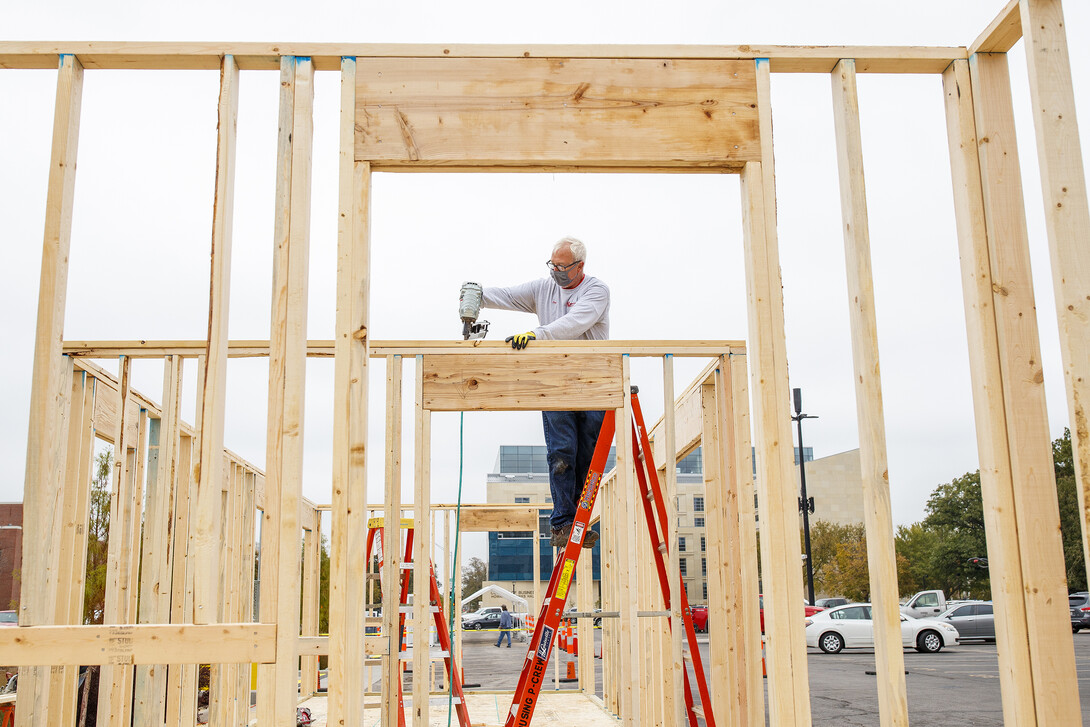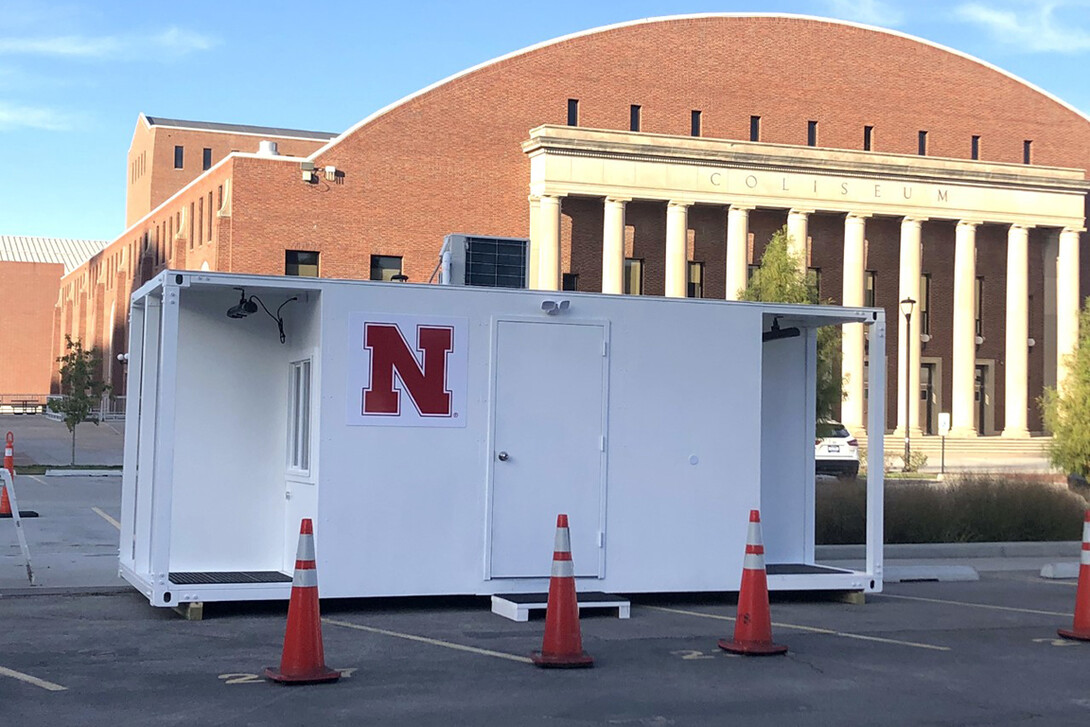
Each day, dozens of faculty, staff and students filter through the Memorial Stadium loop to be randomly tested for COVID-19.
The operation is a key part of assessing the presence of the virus on campus and keeping in-person learning safe for all — but with winter fast approaching and testers protected only by tents, Nebraska’s facilities team has had to get creative to transition smoothly through the changing seasons.
Their solution: two custom-built testing “pods,” outfitted with heating and air conditioning, that serve as protective areas from which testers can carry out operations outside.
“As we started looking into our options earlier this fall, we saw that a lot of other universities were turning toward the pod option, which allows testing to continue in the fresh air while offering some protection to the workers,” said Jim Jackson, associate vice chancellor of university operations, who is leading the pod project alongside Larry Shippen, associate director of housing facilities operations. “We decided to build our own after looking at a few on the market and realizing we could save money, and create them to be more customizable, if we put them together ourselves.”
Jackson and his team began constructing the pods last week and aim to finish by Nov. 9.
Each of the two structures, which resemble a wooden shipping container, serves a specific purpose. Students, faculty and staff will visit the window of the first pod to provide testers with their registration information. The second pod is a “hot zone” where testing will take place. Visitors can walk up on one side or drive up on the other, depending on their preference.

“We found this flexibility to be appealing to people at the randomized testing site — they might want to drive by in their vehicle on the way home, or walk through instead. It’s good to give them both options,” said Jennifer Nelson, director of research strategy and infrastructure, who is orchestrating Nebraska’s testing operations along with Becky Zavala, assistant vice chancellor for research.
The pods have been designed with a wall in the middle of each, allowing for them to be split in half with separate heating and cooling systems. This allows for the flexibility to deploy a single pod to another campus location as needed, where it could simultaneously serve both registration and testing needs.
“We’ve tried to design them to be flexible going forward,” Nelson said. “Jim, Larry and the team have been fantastic in the way they’ve thought this through. They’ve been really excited to help us brainstorm ways we can meet this ongoing need.”
The university also has a third pod already in use, provided by the state of Nebraska on a trial basis.
“We’re so grateful for the opportunity to pilot the state pod and have already been using it as the weather has cooled in recent days,” Nelson said. “We expect to continue to put it to good use at locations on campus where walk-up testing is most helpful.”

University leaders are making plans on how to adapt the testing site at the 17th and R parking garage, where Huskers can go if they suspect they have COVID-19, to the changing weather, as well.
“While that site is covered, which is nice, it’s also going to get cold — so we’re thinking about possible solutions over on that part of campus. We might even build an additional pod,” Nelson said.
One of the benefits of building the pods from scratch, Nelson said, is that they may be able to be repurposed in the future.
“The pods may also be very useful at some point for disseminating a vaccine,” Nelson said. “We’ll have to wait and see, but having an option for doing it in the fresh air could be appealing.”







